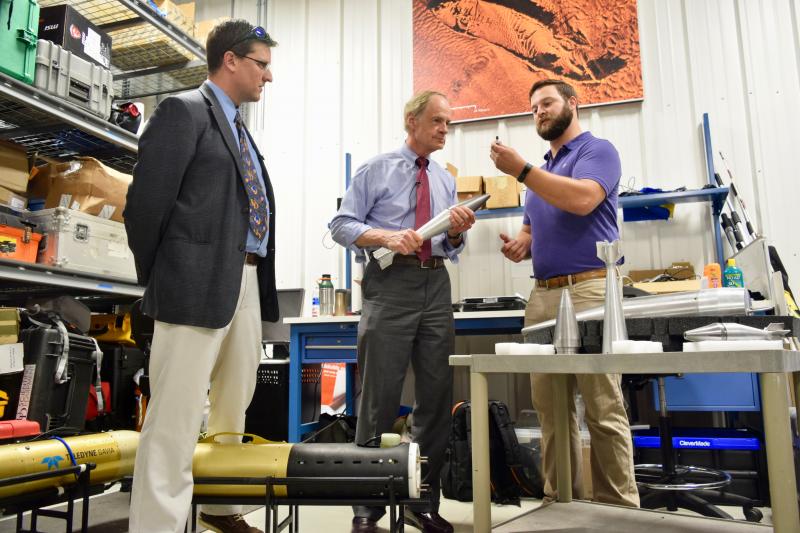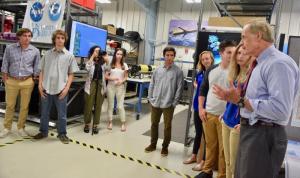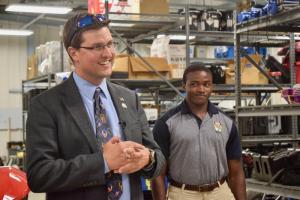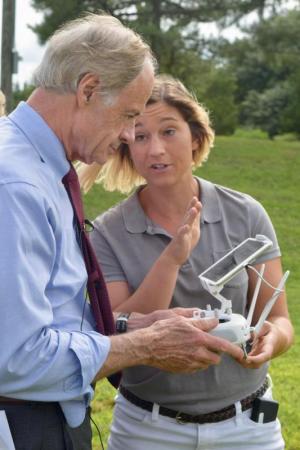UD lab in Lewes home to cutting-edge robotics

The University of Delaware's Robotic Discovery Laboratories in Lewes is all about about automation.
At least that's the way robotics is headed, as researchers, interns and students develop ideas for jet-powered kayaks and automated drones that can capture data about coastal ecosystems for an array of projects.
The high-tech equipment housed at the university's College of Earth, Ocean and Environment – or the College of Earth, Wind and Fire if you're U.S. Sen. Tom Carper – is impressive enough to attract the attention of the National Oceanic and Atmospheric Administration and National Park Service as well as the Department of Defense, federal agencies that have taken advantage of the advanced robotic systems found at the lab.
“We develop and utilize robots in a variety of applications, whether it's tracking sharks and sturgeon to using aerial drones for mapping,” said robotics professor Art Trembanis, who added that UD hosts one of the nation’s largest collections of coastal robotics systems. “And even since last summer, we've acquired some other toys – I mean, equipment.”
Carper stopped by the lab Aug. 8 to meet and greet the minds that operate the fancy tools, pose for photos on the quadski – a combination between a jet ski and an ATV that looks more like fun than work – and try his hand at flying one of the school's automated drones.
“I'm not an oceanographer, but I know a little bit about the ocean,” Carper said, noting his naval career as a flight officer. Meanwhile, researchers showed off underwater contour maps highlighted by an augmented reality display and sensors that can help find buried munitions along the beaches.
UD's robotics lab, which officially opened in 2014, previously focused on underwater robots. Much of the data collected by robots is used for localized studies on coastal habitats and marine life, but the tools can have much broader application, explained Katy O'Connell, executive director of Project Recover.
Robots are being used in Project Recover, a public-private partnership that helped locate a downed World War II aircraft in the waters surrounding the Pacific Islands last year. The idea is to help locate the resting places of those who went missing in action, information that is then passed on to the Department of Defense, she said.
“It's a chance for us to use those technologies in a meaningful way,” Trembanis said.
The lab also offers a unique opportunity for U.S. Naval Academy students to study the science that will support their future military endeavors. An educational partnership between the college and the academy allows students to step up their engineering game while also receiving a four-year degree.
Sussex Tech High School graduate Natalie Sava is pursuing a bachelor's in ocean engineering through the program before she is commissioned into the Navy. The Seaford native, who was nominated by Carper and Sen. Chris Coons for the U.S. Naval Academy, said she is considering a future in aviation.
“I do hope to do something with the ocean degree once I retire from the Navy, and who knows where that's going to take me,” Sava said. “I think the partnership is awesome. I knew about this lab from growing up in the area, and this has kind of connected my two worlds together.”























































